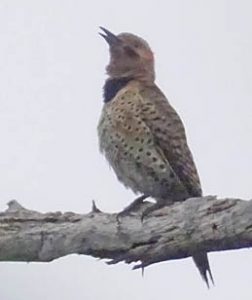
UPDATE MAY 11, 2019: For a far more informative article on this topic, view Truth Be Told: Nova Scotia’s forest department hires a PR firm with forest industry ties to help it with transparency by Linda Pannozzo in the Halifax Examiner, May 10, 2019. It discloses the firm of the consultants, and provides some details on issues with the Harvest Map Viewer (re: “How do you think the HPMV could be improved?: cited below) that I was not familiar with but are pretty critical; also it references the recommendations of the Natural Resources Strategy regarding communication. Well worth the $10 for a month’s subscription to get access to the full article if you are following this topic. I hope L&F and the Consultants developing the communication plan can afford it because they could definitely benefit from reading it.
From Morning File for May 10, 2019:
|
———–
I am told a consultant is conducting interviews related to development of a communications plan for L&F.
Selected people are being interviewed. One interview lasted about 45 minutes.
Some snippets
– The consultant’s report will be delivered to LAF “within the next three weeks”
Some of the questions that were asked:
– In your opinion, where is LAF currently inadequate in their public consultation process?
– In your opinion, how could LAF improve their level of transparency?
– In your opinion, what are opportunities for LAF to improve their public consultation process?
– Through what means would you like to see these initiatives progress? (i.e. action items)
– How would you describe your interactions with staff from LAF?
– How do you think the HPMV could be improved?
Apparently, the consultant “worked for Forest (Products) Nova Scotia for years” but “the lines of questioning did seem to indicate that there was acceptance of the fact that LAF is currently not performing adequate public consultation nor [illustrating] the ability to be appropriately transparent.”
I guess working for Forest NS (previously Forest Products Association of Nova Scotia) does not have to be detrimental to the process, but it doesn’t look all that good. In general, it’s not the forest industry that has been expressing concerns about communication and transparency. ForestNS, for example, got a full briefing with Q&A on what’s going on at L&F with regard to implementing the Lahey recommendations at their AGM on Jan 29, 2019 (view AFR article), while the rest of us had to wait until Mar 26, 2019 for a few lines about it (view Ecological Forestry Implementation – March 26, 2019 update).
A few items from the Lahey Report:
10…The leading themes in submissions from those who participated in the Review primarily to express concerns and call for change in forestry practices were along the following lines:
…3. Some believe a lack of transparency in how DNR conducts itself in relation to the industry and its operations is a major problem and a major reason for distrust and lack of confidence in DNR.77. The rationale for requiring “FULA holders” to complete a legislatively mandated forest management plan through a Class II environmental assessment …It will bring important elements of independence, transparency, and participation to a process that is now seen to be compromised by the double mandate of DNR, the self‐interest of forestry companies, and a high level of opaqueness.
86. [On wood supply] The analysis should be completed openly and transparently. This will not only ensure its credibility but help to avoid a flawed analysis. It will, for example, prevent the kind of discrepancy that occurred in the past when DNR commissioned a review of the cost to industry of the goal of reducing clearcutting to 50 per cent or less of harvesting in five years; instead of analyzing the impact of a reduction in the percentage of harvesting done by clearcutting, it analyzed the impact of a 50 per cent reduction in the volume of harvesting, a very different thing. Openness and transparency will also help to ensure that the analysis is conducted on the basis of fair, defensible, known, and openly stated assumptions.
139c… provide continuing transparency on the development of the western Crown lands, including by directly involving Nova Scotians in the process of managing forestry on Crown lands.
146. DNR must deeply and pervasively embrace a culture of transparency and accountability. It must institute the information management, sharing, and distribution systems needed to put that culture into routine operational practice. For example, the practice of giving written reasons for decisions on matters of public interest should, wherever practicable, become standard. Measures must also be taken to prevent the protection of privacy provisions of the Freedom of Information and Protection of Privacy Act, as well as bureaucratic systems or resistance to disclosure, from limiting the operation of the freedom of information provisions of the same legislation relating to matters of clear public interest. In broad terms, such matters include decisions taken in relation to, or activities conducted on, land that belongs to Nova Scotians through their government.
As I have expressed before, there are some fundamental things that you would think L&F would have addressed already. For example, one of the most frequently accessed pages on NSFN is Who does what. From the Intro:
The NSDNR website does not provide much detail about who does what at DNR beyond listing some of the staff in various sections. There is next to no information about the qualifications and backgrounds of directors and staff. There are no annual reports describing activities and outcomes over the previous year in any detail. Below is what I have been able to find out about who does what related to forestry…
Anyway, I guess it’s encouraging L&F is making an effort to improve its communication, even if belatedly.
